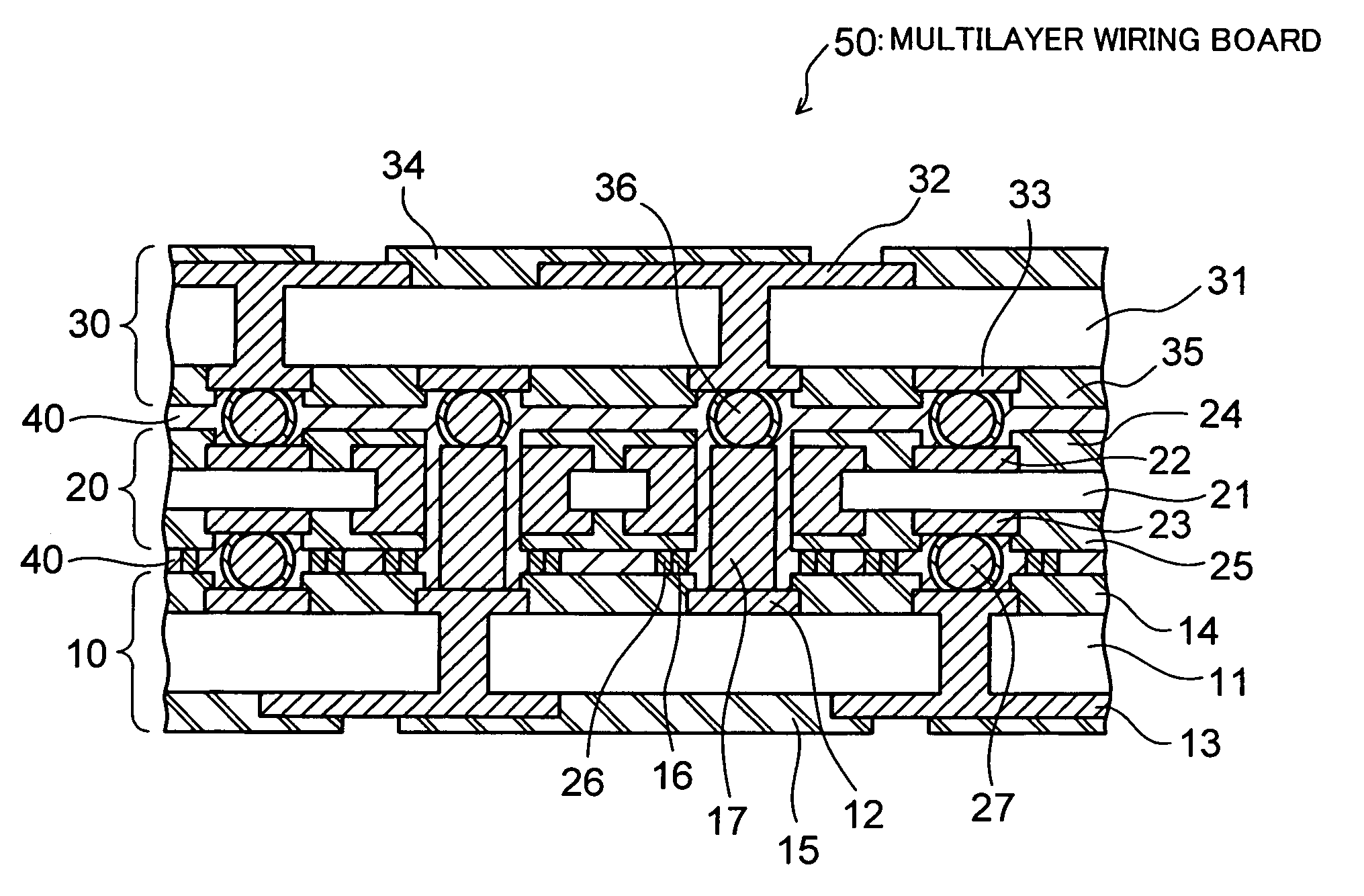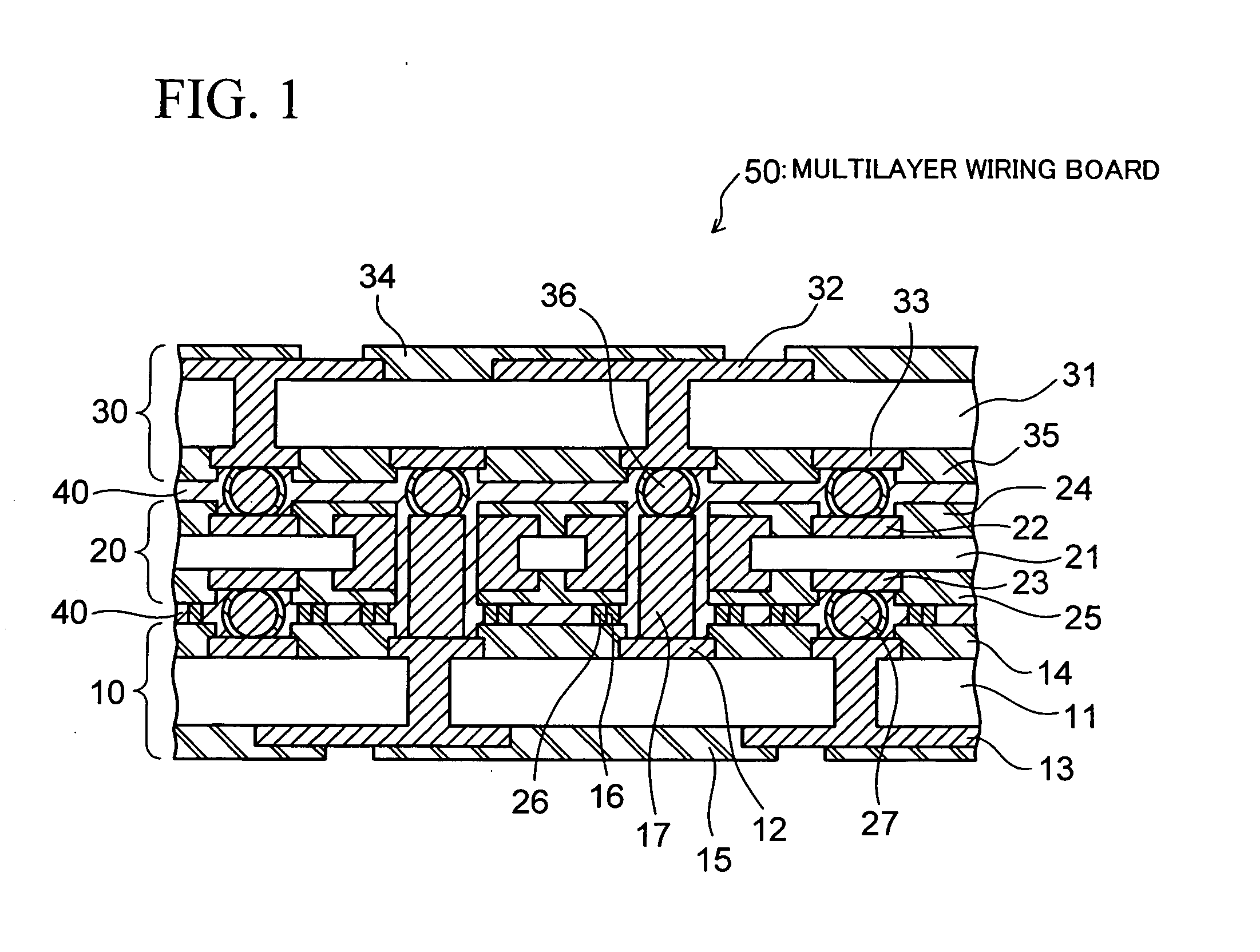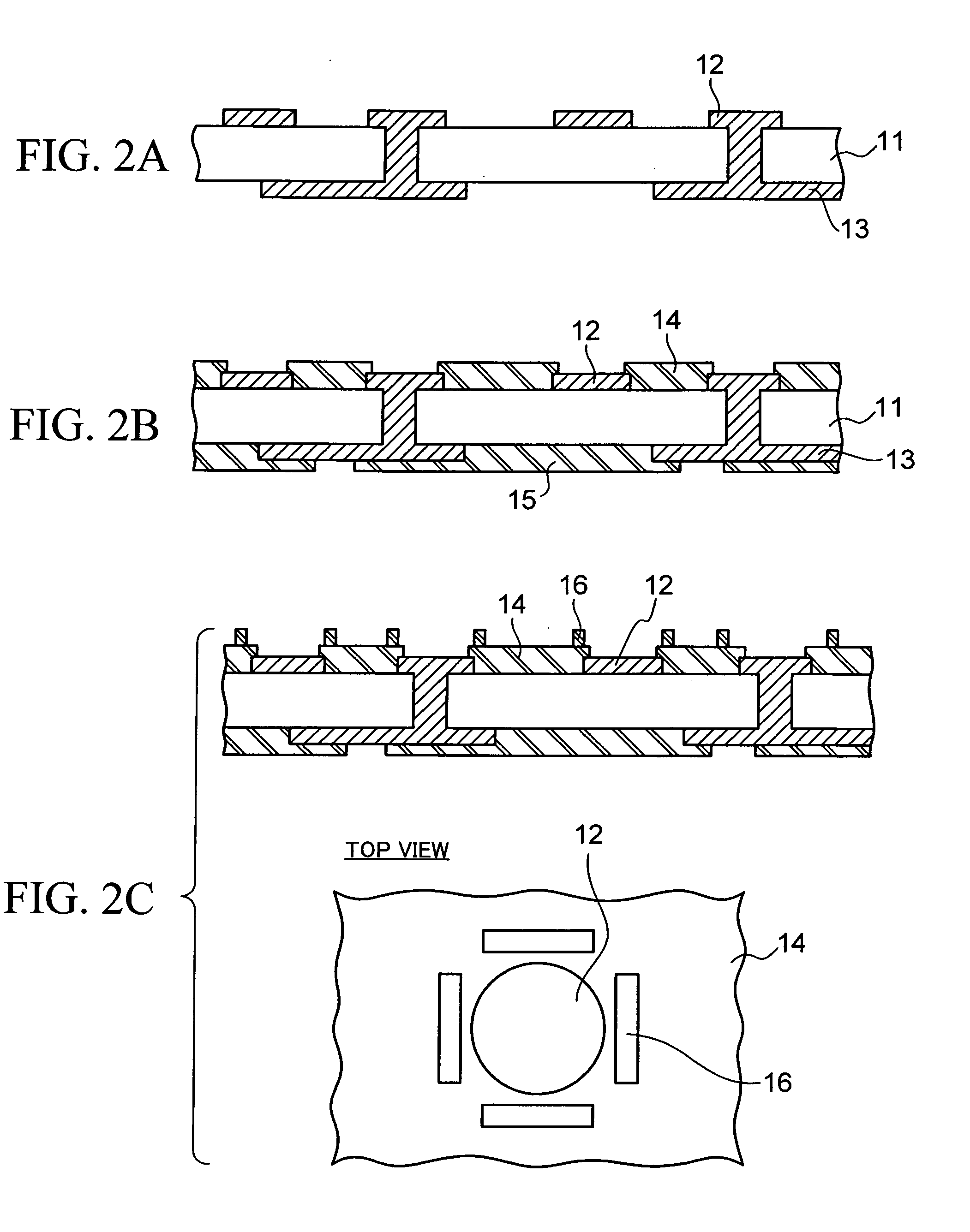Method of manufacturing multilayer wiring board
a manufacturing method and technology for wiring boards, applied in printed circuit aspects, conductive pattern formation, chemistry apparatus and processes, etc., can solve the problems of reducing the yield of a product, and the final result of multi-layer wiring boards being judged as “defective”, so as to improve yield, reduce manufacturing time, and achieve high-density wiring
- Summary
- Abstract
- Description
- Claims
- Application Information
AI Technical Summary
Benefits of technology
Problems solved by technology
Method used
Image
Examples
Embodiment Construction
[0024]Description will be given below with regard to preferred embodiments of the present invention with reference to the accompanying drawings.
[0025]FIG. 1 shows in cross-sectional view an example of the configuration of a multilayer wiring board as manufactured using a method of manufacturing a multilayer wiring board according to an embodiment of the present invention.
[0026]As shown in FIG. 1, a multilayer wiring board 50 according to the embodiment includes three wiring boards 10, 20 and 30 stacked vertically one on top of another, and resin layers (i.e., insulating layers) 40 formed to fill in between the adjacent ones of the wiring boards 10, 20 and 30. Hereinafter, the lowermost one, namely the wiring board 10, of the wiring boards stacked will be also called a “lower wiring board” for the sake of convenience, and likewise, the intermediate one, namely the wiring board 20, will be also called a “middle wiring board,” and the uppermost one, namely the wiring board 30, will be ...
PUM
| Property | Measurement | Unit |
|---|---|---|
| thick | aaaaa | aaaaa |
| thick | aaaaa | aaaaa |
| thickness | aaaaa | aaaaa |
Abstract
Description
Claims
Application Information
 Login to View More
Login to View More - R&D
- Intellectual Property
- Life Sciences
- Materials
- Tech Scout
- Unparalleled Data Quality
- Higher Quality Content
- 60% Fewer Hallucinations
Browse by: Latest US Patents, China's latest patents, Technical Efficacy Thesaurus, Application Domain, Technology Topic, Popular Technical Reports.
© 2025 PatSnap. All rights reserved.Legal|Privacy policy|Modern Slavery Act Transparency Statement|Sitemap|About US| Contact US: help@patsnap.com



